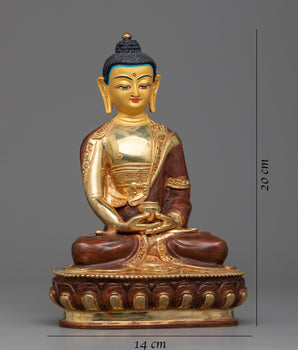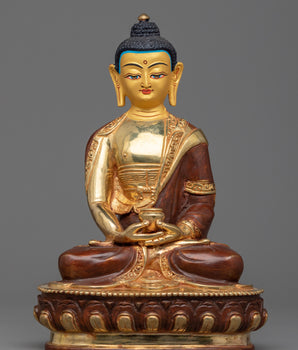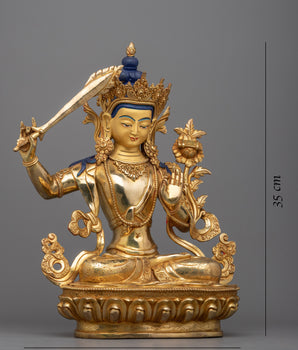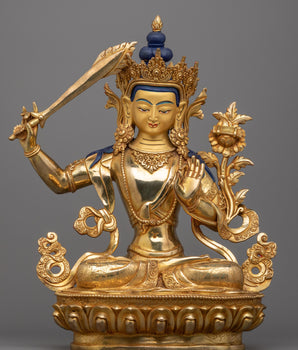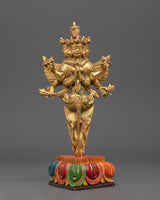
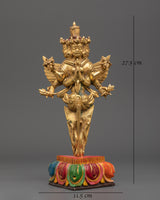
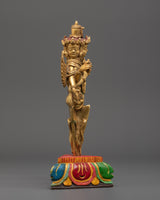
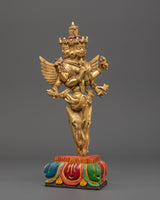
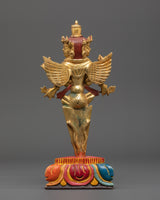
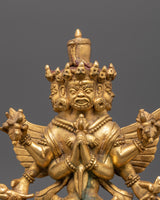
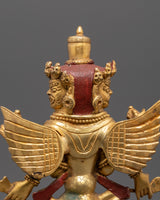
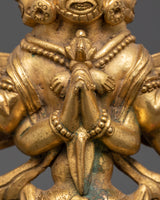
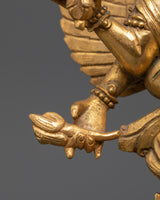
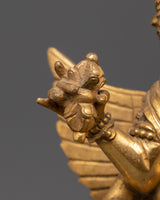
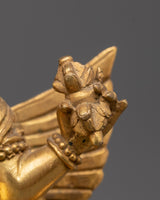
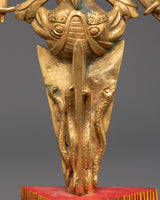
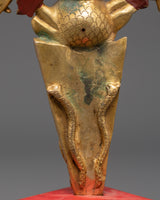
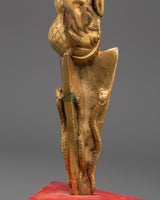
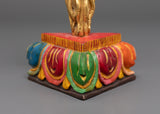

Handmade Vajrakilaya Phurba | Tibetan Buddhist Ritual Dagger

100% AUTHENTIC

HANDMADE

FREE SHIPPING
Handmade Vajrakilaya Phurba | Sacred Tantric Ceremonial Knife
--------------------------------------------
Size: 27.5cm (Height) x 11.5cm (Width)
Weight: 1.32kg
Material: Brass, Wooden Base
--------------------------------------------
About The Ritual Item :
This handmade Vajrakilaya Phurba represents one of the most powerful ritual implements in Tibetan Buddhist tradition. Crafted from quality brass, this sacred ceremonial knife features the iconic three-faced Vajrakilaya deity, each face symbolizing triumph over the three poisons of ignorance, attachment, and aversion. The wrathful deity's crown of skulls and fierce expressions embody protective power that destroys spiritual obstacles, making this authentic for tantric practitioners and collectors of Tibetan religious artifacts.
The intricate design showcases Himalayan craftsmanship, with the deity's six arms clearly visible - two holding the traditional phurba blade. In contrast, others grasp vajras and tridents representing different aspects of enlightened activity. The wooden base features vibrant lotus petals in conventional colors of red, blue, green, and gold, symbolizing the pure foundation from which enlightened wisdom emerges. Every detail maintains the sacred proportions essential to authentic Vajrakilaya representations.
Standing at 27.5cm in height with a weight of 1.32kg, this Vajrakilaya Phurba commands presence on any altar or meditation space. Whether used for tantric rituals, meditation focus, or Buddhist art collections, this handmade Tibetan ritual dagger embodies sacred tradition. This authentic Buddhist ceremonial knife serves practitioners of Vajrayana Buddhism, particularly Nyingma lineages, where Vajrakilaya practices are central to spiritual development.
Introduction To The Phurba :
The ceremonial dagger (Sanskrit: Kila; Tibetan: phurba) is essential for expelling evil and is considered particularly effective in neutralizing the forces obstructing Tantric Buddhist practice. It has ancient origins, first appearing in the Indian Rig Veda as the core blade of the vajra used by Indra to destroy the primordial cosmic snake Vritra. Kila, derived from Sanskrit, was most likely associated with Vedic sacrifices. Meditation on the Vajrakila Tantra, an early Indian scripture first promoted in Tibet in the eighth century by Padmasambhava, one of the founding teachers of Tibetan Buddhism, is used to invoke the three-headed Vajrakila Buddha.
How to Set Up Your Buddhist Shrine?
Find a clean, quiet, and uncluttered spot.
Please set up an altar table and cover it with an altar cloth that calls to you.
Place your sacred item (statue, thangka, or a picture of Buddha) at the center.





















